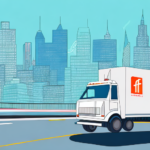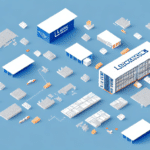Understanding Last Mile Delivery Costs in E-commerce
In the rapidly evolving e-commerce landscape, last mile delivery stands as a pivotal element in ensuring the timely and efficient delivery of goods to customers. This final phase, transporting products from distribution centers to the customer’s doorstep, is crucial for maintaining customer satisfaction and fostering repeat business. However, the complexities and rising demands associated with last mile delivery present significant challenges and cost implications for businesses. This article explores the various factors influencing last mile delivery costs, the challenges faced, and best practices for cost management.
The Importance of Last Mile Delivery in E-commerce
Last mile delivery serves as the critical touchpoint between customers and retailers. The quality of this experience directly impacts customer satisfaction, loyalty, and repeat purchases. According to a Forbes report, 68% of consumers consider delivery speed as the most important factor when shopping online.
Efficient last mile delivery not only enhances customer experience but also influences a company's profitability. Inefficiencies can lead to increased costs from missed delivery windows, failed deliveries, and returns. Conversely, a streamlined delivery process can result in cost savings, higher revenue, and a competitive market advantage. Investments in innovative technologies, such as autonomous vehicles and advanced logistics software, are becoming increasingly common to meet these demands.
Challenges in Last Mile Delivery
High Logistics Costs
The last mile often represents the most expensive segment of the delivery process, accounting for up to 53% of total shipping costs according to a study by Invesp CRO. The complexity and number of touchpoints required amplify these costs significantly.
Operational Challenges
- Urban congestion and traffic can delay deliveries and increase fuel expenses.
- Parking restrictions and limited access to certain areas pose logistical hurdles.
- Unpredictable weather conditions can disrupt delivery schedules and routes.
Rising Customer Expectations
With the surge in e-commerce, customers now demand faster, more flexible, and personalized delivery options. This necessitates the adoption of new delivery methods, such as delivery lockers and drones, which come with their own set of implementation challenges and costs.
Benefits of Efficient Last Mile Delivery
Cost Reduction
Optimizing the last mile delivery process can significantly reduce operational costs by minimizing touchpoints and eliminating redundancies. For instance, route optimization can lower fuel consumption and shorten delivery times.
Enhanced Customer Satisfaction
Timely and reliable deliveries lead to higher customer satisfaction and positive reviews, fostering loyalty and repeat business. A PwC report highlights that 73% of consumers point to customer experience as an important factor in their purchasing decisions.
Environmental Impact
Efficient delivery routes and the use of eco-friendly vehicles can reduce carbon emissions, contributing to a company's sustainability goals. According to the EPA, optimizing delivery routes can lower a company's carbon footprint by up to 30%.
Key Factors Influencing Last Mile Delivery Costs
Distance and Delivery Area
The distance between the distribution center and the customer plays a significant role in determining delivery costs. Urban deliveries may benefit from shorter distances but face challenges like traffic, while rural deliveries may cover longer distances with fewer delivery points.
Package Characteristics
Weight, size, and the nature of the package influence the cost of delivery. Heavier and bulkier items require more resources to transport, increasing overall costs.
Delivery Volume
Higher delivery volumes can lead to economies of scale, reducing the cost per package. However, managing large volumes efficiently requires robust logistics infrastructure.
Technology Utilization
Implementing technologies such as GPS tracking and route optimization software can streamline operations and reduce costs. According to a Business.com article, companies utilizing advanced logistics software see a 20% reduction in delivery times.
Role of Technology in Optimizing Last Mile Delivery
Route Optimization
Advanced route optimization tools analyze traffic patterns, delivery windows, and other variables to determine the most efficient delivery routes, reducing fuel consumption and delivery times.
Real-Time Tracking and Analytics
Real-time tracking provides visibility into delivery progress, allowing companies to address delays promptly. Data analytics enable businesses to identify patterns and continuously improve their delivery strategies.
Automation and Robotics
Automated systems, including drones and delivery robots, offer the potential to reduce labor costs and increase delivery speed. Companies like Amazon with its Prime Air are pioneering such technologies to enhance last mile delivery efficiency.
Strategies to Reduce Last Mile Delivery Costs
Collaborative Logistics
Partnering with other logistics providers can optimize delivery routes and share resources, leading to cost savings and improved efficiency.
Flexible Delivery Options
Offering customers choices such as same-day delivery, pickup points, and evening deliveries can help manage delivery schedules more effectively and reduce costs.
Centralized Delivery Hubs
Consolidating deliveries through centralized hubs allows for bulk processing and distribution, minimizing the number of individual deliveries and associated costs.
Adoption of Sustainable Practices
Using electric vehicles and optimizing delivery routes not only reduces environmental impact but also lowers fuel and maintenance costs. UPS, for example, has invested in electric delivery vehicles to enhance sustainability and reduce operational costs.
Measuring Success with Key Performance Indicators (KPIs)
Tracking KPIs is essential for assessing the effectiveness of last mile delivery operations. Key KPIs include:
- Delivery Time: Average time taken to complete deliveries.
- Delivery Cost per Package: Total delivery costs divided by the number of packages delivered.
- On-Time Delivery Rate: Percentage of deliveries completed within the promised timeframe.
- Customer Satisfaction Score: Customer feedback and ratings regarding the delivery experience.
- First-Time Delivery Success Rate: Percentage of deliveries successfully completed on the first attempt.
Monitoring these KPIs enables businesses to identify areas for improvement and implement data-driven strategies to enhance delivery efficiency and reduce costs.
The Future of Last Mile Delivery
Advancements in technology, such as autonomous vehicles and artificial intelligence, are set to transform last mile delivery, making it more efficient and cost-effective. The integration of big data analytics will further enhance route optimization and predictive maintenance, while the increasing adoption of sustainable delivery methods aligns with global environmental goals. As e-commerce continues to grow, the focus on optimizing last mile delivery will remain paramount, driving innovation and strategic investments in this critical area.
Case Studies: Successful Last Mile Delivery Models
Several companies have demonstrated excellence in last mile delivery through innovative strategies:
- Amazon Prime Air: Utilizes drones to expedite deliveries, enhancing speed and reducing labor costs.
- UPS's Electric Fleet: Invested in electric vehicles to lower emissions and operational costs, showcasing a commitment to sustainability.
- FedEx SameDay: Offers same-day delivery services, leveraging an extensive logistics network to meet customer demands for faster delivery.
These examples illustrate how leveraging technology and strategic planning can lead to successful and cost-efficient last mile delivery operations.
Best Practices for Managing Last Mile Delivery Costs
- Optimize Delivery Routes: Use advanced software to plan the most efficient paths.
- Invest in Technology: Implement GPS tracking, real-time analytics, and automated systems.
- Enhance Collaboration: Partner with other logistics providers and share resources.
- Focus on Sustainability: Adopt eco-friendly vehicles and practices to reduce costs and environmental impact.
- Monitor and Analyze KPIs: Regularly assess performance metrics to identify and address inefficiencies.
Choosing the Right Logistics Partner
Selecting an experienced and reliable logistics partner is crucial for successful last mile delivery. Key factors to consider include:
- Track Record: Proven history of timely and efficient deliveries.
- Technology Integration: Ability to integrate advanced technologies for better delivery management.
- Scalability: Capacity to handle varying delivery volumes as your business grows.
- Customer Support: Responsive support to address any delivery issues promptly.
A well-chosen logistics partner can enhance delivery efficiency, reduce costs, and improve overall customer satisfaction.
The Role of Big Data in Last Mile Delivery Optimization
Big data analytics is revolutionizing last mile delivery by providing actionable insights into various aspects of the delivery process. By analyzing data from customer orders, traffic patterns, and delivery performance, companies can:
- Predict Demand: Anticipate peak delivery times and allocate resources accordingly.
- Optimize Routes: Identify the most efficient paths based on real-time data.
- Enhance Customer Experience: Personalize delivery options and provide accurate delivery estimates.
- Improve Operational Efficiency: Streamline processes and reduce redundancies.
Utilizing big data enables companies to make informed decisions, enhance delivery performance, and maintain a competitive edge in the e-commerce market.




















